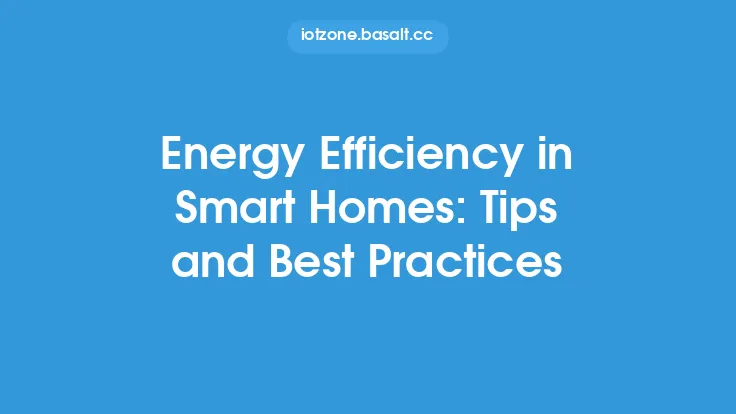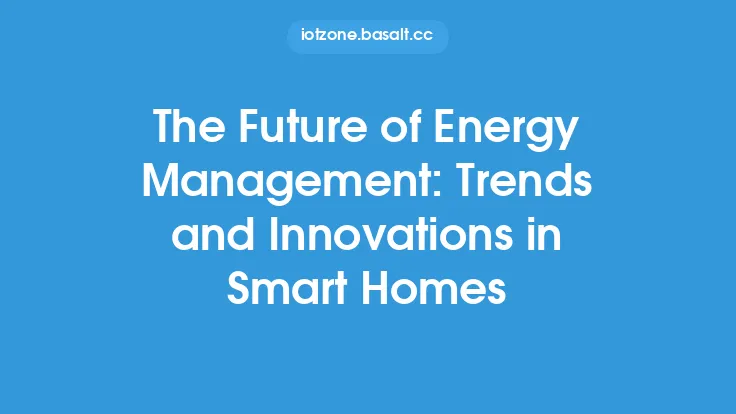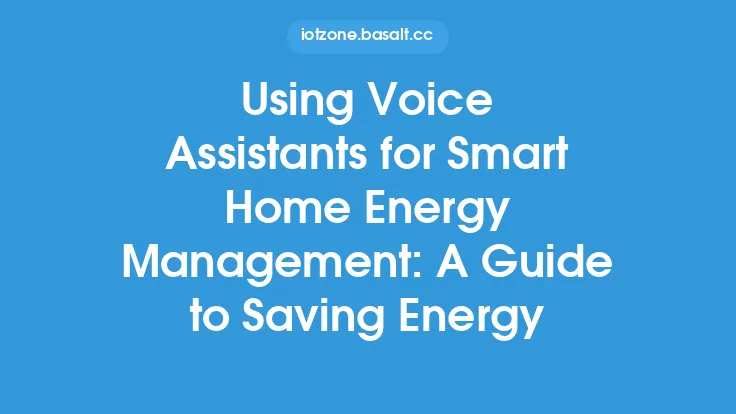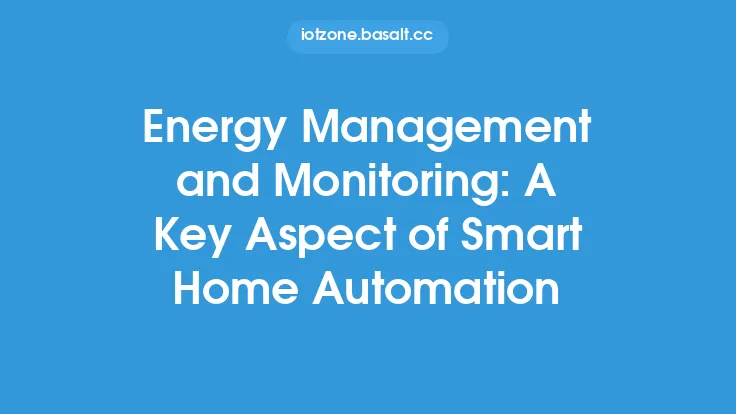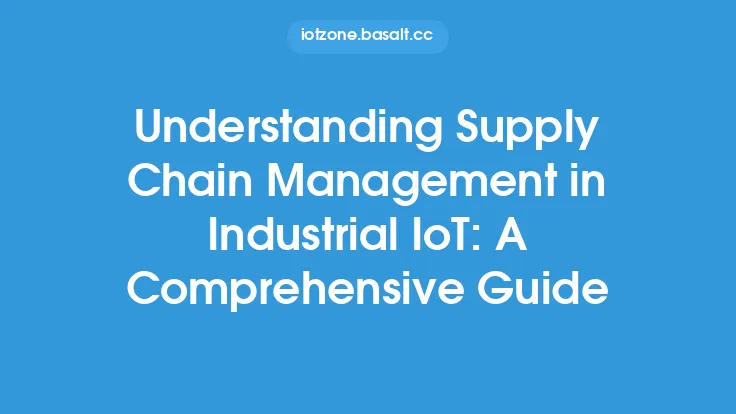The concept of energy management in smart homes has gained significant attention in recent years, and for good reason. With the increasing demand for energy efficiency and reduced carbon footprint, smart home automation has emerged as a key solution. At its core, energy management in smart homes involves the use of advanced technologies to monitor, control, and optimize energy consumption. This comprehensive guide will delve into the world of energy management in smart homes, exploring the various aspects, benefits, and technologies involved.
Introduction to Energy Management Systems
Energy management systems (EMS) are the backbone of energy management in smart homes. An EMS is a network of devices, sensors, and software that work together to monitor and control energy usage. These systems can be integrated with various smart devices, such as thermostats, lighting systems, and appliances, to provide real-time energy usage data and automated control. The primary goal of an EMS is to optimize energy consumption, reduce waste, and provide a comfortable living environment.
Key Components of Energy Management Systems
A typical EMS consists of several key components, including:
- Sensors and Meters: These devices measure energy usage in real-time, providing detailed data on consumption patterns.
- Gateways and Hubs: These devices connect sensors and meters to the internet, enabling remote monitoring and control.
- Software and Analytics: Advanced software and analytics platforms process energy usage data, providing insights and recommendations for optimization.
- Control Devices: These devices, such as smart thermostats and lighting systems, receive commands from the EMS to adjust energy usage.
Energy Monitoring and Metering
Energy monitoring and metering are critical components of energy management in smart homes. Advanced metering infrastructure (AMI) enables real-time monitoring of energy usage, providing detailed data on consumption patterns. This data can be used to identify areas of inefficiency, optimize energy usage, and detect potential issues before they become major problems. Some common types of energy meters used in smart homes include:
- Smart Meters: These meters provide real-time energy usage data and can be integrated with EMS.
- Submeters: These meters measure energy usage at the circuit or device level, providing detailed data on consumption patterns.
- Current Transformers: These devices measure current flow and can be used to monitor energy usage in real-time.
Energy Optimization and Control
Energy optimization and control are the primary goals of energy management in smart homes. By analyzing energy usage data and adjusting energy consumption patterns, smart homes can reduce waste, optimize energy usage, and provide a comfortable living environment. Some common energy optimization and control strategies include:
- Load Shedding: This involves reducing non-essential energy usage during peak periods to minimize waste.
- Load Shifting: This involves shifting energy usage from peak to off-peak periods to reduce strain on the grid.
- Energy Storage: This involves using energy storage systems, such as batteries, to store excess energy generated by renewable sources.
Communication Protocols and Standards
Communication protocols and standards play a critical role in energy management in smart homes. These protocols enable devices to communicate with each other, exchange data, and receive commands. Some common communication protocols used in smart homes include:
- Zigbee: A low-power, low-data-rate protocol used for device-to-device communication.
- Z-Wave: A low-power, low-data-rate protocol used for device-to-device communication.
- Wi-Fi: A high-data-rate protocol used for internet connectivity and device communication.
- Bluetooth: A low-power, low-data-rate protocol used for device-to-device communication.
Benefits of Energy Management in Smart Homes
The benefits of energy management in smart homes are numerous and well-documented. Some of the most significant advantages include:
- Energy Efficiency: Energy management systems can optimize energy usage, reducing waste and minimizing energy consumption.
- Cost Savings: By reducing energy consumption, smart homes can save money on energy bills and minimize waste.
- Increased Comfort: Energy management systems can provide a comfortable living environment by adjusting temperature, lighting, and other factors.
- Environmental Benefits: By reducing energy consumption and promoting energy efficiency, smart homes can minimize their carbon footprint and contribute to a sustainable future.
Challenges and Limitations
While energy management in smart homes offers numerous benefits, there are also several challenges and limitations to consider. Some of the most significant challenges include:
- Interoperability: Ensuring that devices from different manufacturers can communicate with each other seamlessly.
- Security: Protecting energy management systems from cyber threats and data breaches.
- Cost: The high upfront cost of energy management systems can be a barrier to adoption.
- Complexity: Energy management systems can be complex and difficult to install, configure, and maintain.
Conclusion
Energy management in smart homes is a complex and multifaceted field that involves the use of advanced technologies to monitor, control, and optimize energy consumption. By understanding the key components, benefits, and challenges of energy management systems, homeowners and builders can create smart homes that are energy-efficient, comfortable, and sustainable. As the demand for energy efficiency and reduced carbon footprint continues to grow, energy management in smart homes will play an increasingly important role in shaping the future of smart home automation.
